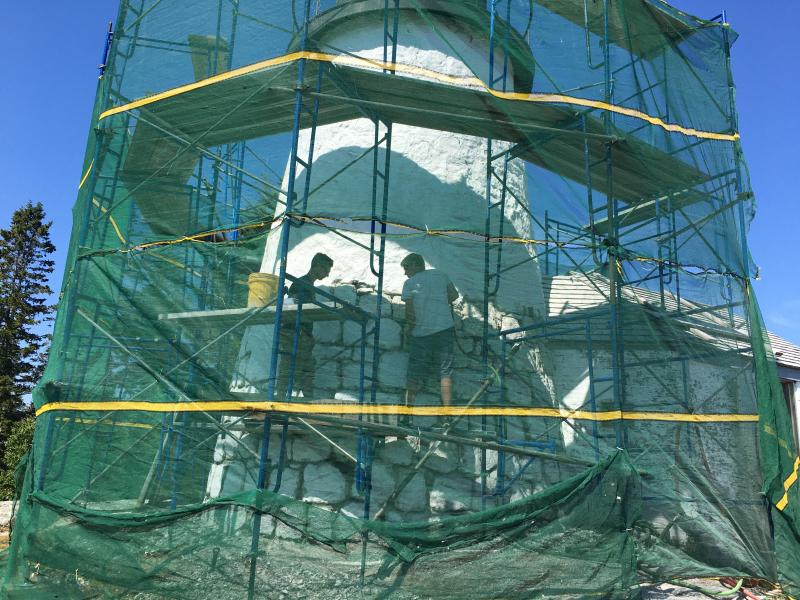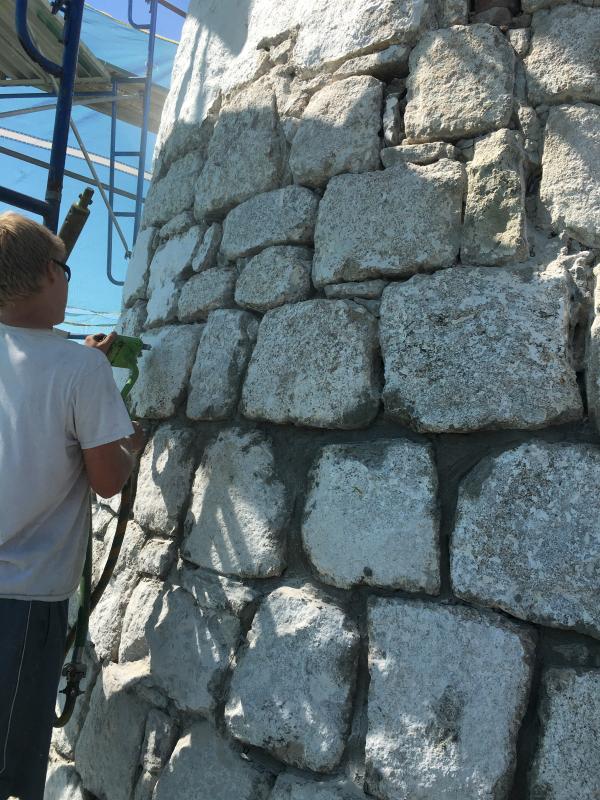Why build a lighthouse in Boothbay Harbor?
Prior to the construction of inland roads, the ocean was the highway for moving lumber, lime, ice, fish, and other goods from Maine down the eastern seaboard and to foreign countries. In the early 1800’s, the Secretary of the Navy made the following statement about the need for a lighthouse in Boothbay Harbor. “This is well known as one of the most important harbors upon the whole coast. It is easy of ingress and egress, large, safe in gales from any point of the compass, with good anchorage in any part of it. It is a harbor which all vessels bound east or west when met by head winds or unfavorable weather endeavor to make. It being a sort of rendezvous for coasters and more than three hundred sail have been anchored there at one time.”
On March 3, 1821, the 16th Congress authorized the construction of the Burnt Island Lighthouse and two others along the coast of Maine. They appropriated a total of $10,500 to build all three stations. Secretary of Treasury William H. Crawford was assigned the task of selecting a suitable site and he chose Burnt Island, located at the entrance of Boothbay Harbor. On May 25th, the U.S. government purchased the island for $150 from local businessmen Jacob Auld and Joseph McCobb.
During this time period, its five-acres was devoid of trees due to the practice of burning vegetation to keep the land clear and to stimulate the growth of grass. Burnt island, and other islands in the region, were commonly used as ideal, summer pastures for sheep to graze because there was no need for fencing and the flock was free from parasites and predators.
The government’s builders were charged with the task of constructing a stone lighthouse and keeper’s dwelling using granite blocks cut from the island. It was common method back then to use locally acquired building materials instead of shipping raw materials to the site. The most probable harvest locations were the cellar hole under the keeper’s dwelling and possibly the shoreline, even though signs of stonecutting are not obvious.
The construction style of Burnt Island’s lighthouse is considered rubblestone. Think of it as a sandwiched wall consisting of an outer layer of granite and filler rock, a center core of cemented rubble (beach stone), and an inner layer of brick. The thickness of this wall varies as the conical structure tapers upward with a depth of four-feet at the base and 18 inches at the top. The outside dimension at the base is 15 feet in diameter and almost 10 feet where the 20-foot-tall tower meets the lantern-room deck.
Burnt Island Lighthouse was established as the ninth station along the coast of Maine, but lighthouses two through eight were all rebuilt in the 1850s. Causes for their failure were attributed to the use of brackish or excessive water within the mortar, water penetration, inadequate ventilation, and/or building in cold weather - all affecting mortar set time and strength. Luckily, none of those conditions occurred at Burnt Island, and as a result, it holds the distinction of being Maine’s oldest “original” tower. Only Portland Head Light surpasses Burnt Island in age; however, its tower is not entirely original having undergone three height changes since it was built in 1790.
After 199 years of weathering the storms, our beacon of hope is being restored by the J.B. Leslie Co. of South Berwick, a seasoned, lighthouse contractor with Burnt Island being the owner’s 22nd restoration project. Jim Leslie and crew arrived last week bringing ashore essential equipment such as a commercial compressor, sponge-blaster, other tools, and plenty of mortar. They started at the base of the lighthouse removing layers of paint, Thoroseal, and whitewash coatings to reveal granite blocks that were indeed similar in nature to the ledge it sets upon.
Over the next couple of weeks, the crew will continue to remove mortar between the blocks to a depth of 1.5 inches and refill those joints with Portland cement and a finish coat of natural mortar. Upon close examination of the old mortar, it was found to be of two different colors - the beige-colored pieces are original 1821 mortar, while the gray pieces indicate that reinforcement did take place in the more recent past. When the current repointing is completed, the granite blocks will once again be painted, as the white tower is a registered daymark for mariners during the daylight hours.
This is the first in a series of updates on the restoration project. If you are thinking of coming ashore this summer, please know that the dock is unavailable during weekdays. Moorings are available and paddlers are welcome to land on the beach near the boathouse between the hours of 10 a.m. and 5 p.m. The worksite has been roped off for your safety, so please do not enter this area.
The Department of Marine Resources and I are so appreciative of the tremendous support offered by residents and businesses of this community, a group of artists, school children and their teachers, an anonymous donor, and visitors from near and afar. This light will shine on for generations to come as a result of your generosity. We look forward to celebrating Burnt Island’s Bicentennial with you in 2021.
Event Date
Address
United States



























